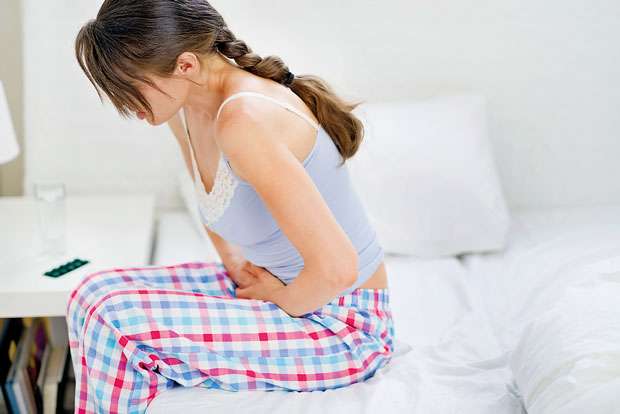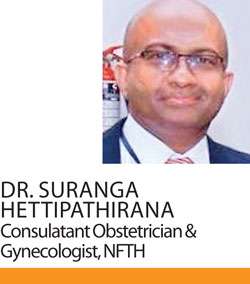19 Oct 2018 - {{hitsCtrl.values.hits}}

 Periods! This is yet another name for ‘pain’ in some of us women which can be awful enough to take 3-5 beautiful days off a month, due to discomfort and pain. Most of us with such unbearable features during periods would just lie on a bed, doing nothing-which in turn would affect the productivity of our lifestyles, efficiency and thus the overall quality of life.
Periods! This is yet another name for ‘pain’ in some of us women which can be awful enough to take 3-5 beautiful days off a month, due to discomfort and pain. Most of us with such unbearable features during periods would just lie on a bed, doing nothing-which in turn would affect the productivity of our lifestyles, efficiency and thus the overall quality of life.
Periods or menstrual bleeding occurs when your womb gets ready to conceive a fertilized ovum (after the fusion of an ovum from mother and sperm from the father during sexual intercourse), by making its walls proliferated and comfortable enough to provide room for the fetus to grow and sheds when the expected ovum doesn’t arrive as promised! The walls comprising layers of tissues would shed under the influence of various hormones and exit as menstrual bleeding.

Cramping pain associated with menstrual bleeding is usually due to mild contractions of your womb, while shedding off the unwanted tissues. In addition to that, these contractions will result in the reduction of blood supply to the area-thus making it oxygen deficient-leading to release of various pain-triggering chemicals like Prostaglandins. Less commonly, this period pain can be a result of an underlying pathology like Endometriosis.
So in this week’s Health Capsule, we are going to discuss about Endometriosis with Dr Suranga Hettipathirana, Consultant Obstetrician & Gynecologist, Neville Fernando Teaching Hospital (NFTH), who has years of experience in treating patients with this condition.
Endometriosis is a common condition among females nowadays which is known to result in severe cramping pain and lasting over a long period. Endometriosis is defined as a condition where functional endometrial lining is present in sites other than the uterine cavity (womb). These sites can include, ovaries, utero-sacral ligament, umbilicus, nasal passage and pleural cavity. So as discussed earlier, when fertilization doesn’t occur and endometrium in the womb starts shedding under the influence of specific hormones, the sites where this ectopic endometrial lining is present will also start bleeding resulting in severe pain-characteristically experienced before menstruation, during menstruation and after menstruation, there by referred to as pain (dysmenorrhea) outlasting periods.
How is this condition?
Endometriosis is a condition which is quite common among females-accounting for 10-15% cases where as 30-40% of subfertile patients would present with the same pathology which gives rise to their subfertility.
The underlying mechanism
Several theories have been put forward with regards to the etiology of endometriosis, but none of this confirms any clear-cut initiation.
Genetics and family history –Endometriosis tends to run in families and is commonly seen among first degree relatives, so if you grandmother or mother or both got the disease, which might not be severe enough to present clinically, you are also vulnerable to have it.
Retrograde menstruation and implantation – When tissue lining of the womb sheds off and flows through the fallopian tubes it tends to embed itself on the organs of the pelvis rather than leaving the body as bleeding.

Lymphatic and vascular spread- Endometrial cells can spread through-out the body along with blood circulation or lymphatic system and result in ectopic sites with endometrial tissue lining E.g. Pleural cavity, nasal passage
How would you present?
Constipation
We cannot really say that a patient with endometriosis will present with all these symptoms, but if any of these, especially the pain outlasting periods is worrying you and is severe enough to keep you on bed, all through, it is always better to seek medical advice.
Endometriosis and subfertility
Endometriosis and subfertility always go hand in hand as a significant percentage of females (30-40%), affected by subfertility would have an underlying endometriosis which needs early diagnosis and therapeutic interventions.
Some of the reasons why endometriosis leads to subfertility include,
Diagnosis of Endometriosis
A complete history-from the attainment of menarche until the last episode of periods, along with how it presents, regularity of your cycle, amount of bleeding (flow, passage of clots), number of sanitary pads you normally use, pain and other associated features, family history etc. are highly important in making the diagnosis of Endometriosis.
Vaginal examination and Digital rectal examination will also be helpful to assess the extension and severity of the condition.
Once a clinical suspicion of endometriosis is made, various investigations including blood tests (full blood count-haemoglobin levels to see if you are anaemic due to excessive blood loss, CA125 to exclude malignancy) and imaging studies like trans-vaginal scan or ultra sound scan-abdomen followed by diagnostic Laparoscopy will be carried out, in order to come to an accurate diagnosis.
There are several other disease conditions presenting with similar features which include, Pelvic inflammatory disease, Adenomyosis and Tubo-ovarian abscess hence it is crucial to exclude them while arriving at a diagnosis.
Treatment
After the diagnosis is confirmed-the best treatment modality will be decided, considering various factors like your age, the most affected aspect to be addressed-whether it is the pain or subfertility or something else, the necessity to reserve fertility (how soon you are expecting to become pregnant) etc.
The available treatment options:
Take home message
Endometriosis can give rise to various critical complications including sub-fertility and long term pain and suffering, ultimately resulting in a negative impact on the quality of your life, so it is always better to seek EARLY medical advice without waiting so long thinking that period pain is something a female is cursed with and you have to bear it up no matter what-because early diagnosis and on-time medical or surgical interventions could do miracles!
22 Dec 2024 3 hours ago
22 Dec 2024 3 hours ago
22 Dec 2024 6 hours ago
22 Dec 2024 6 hours ago
22 Dec 2024 6 hours ago